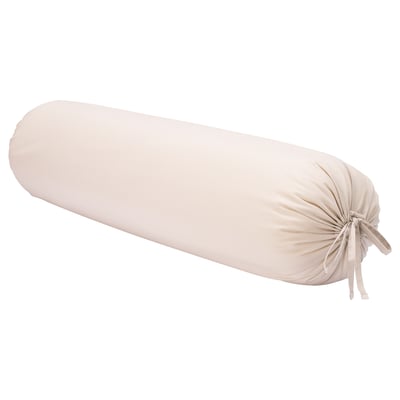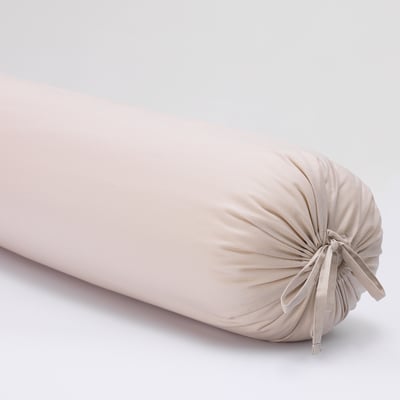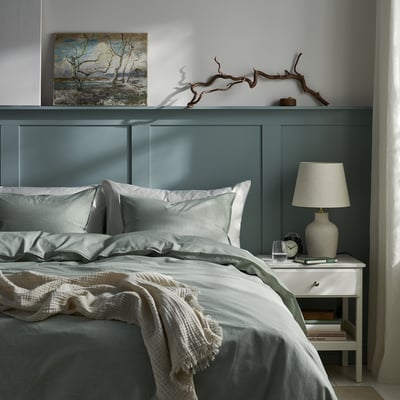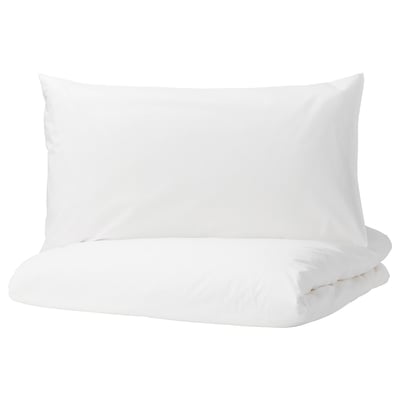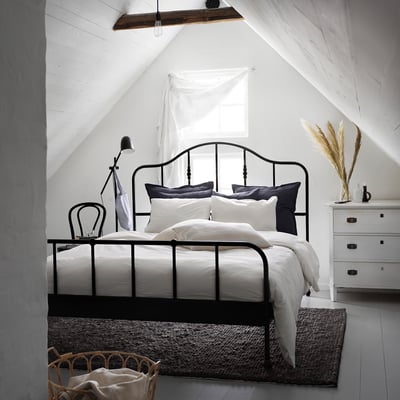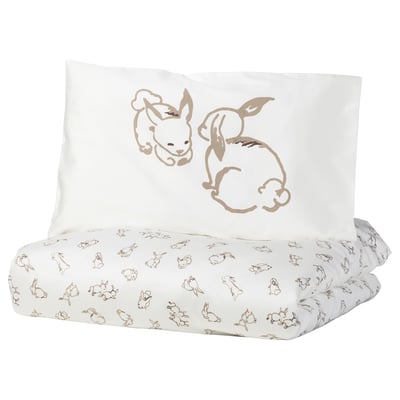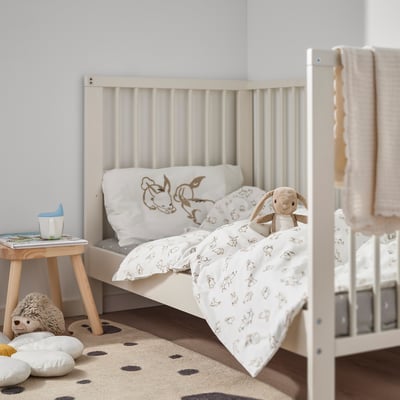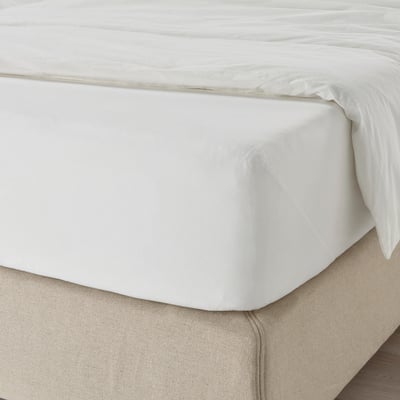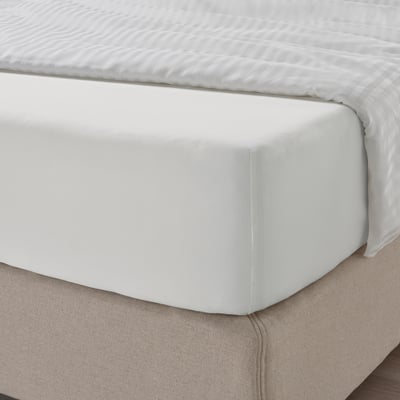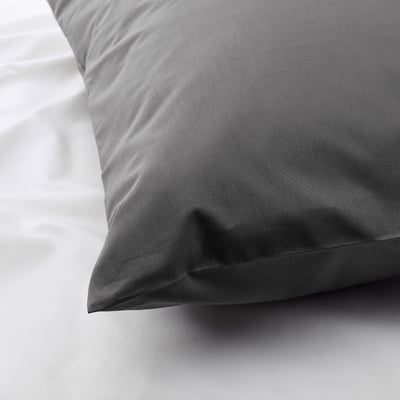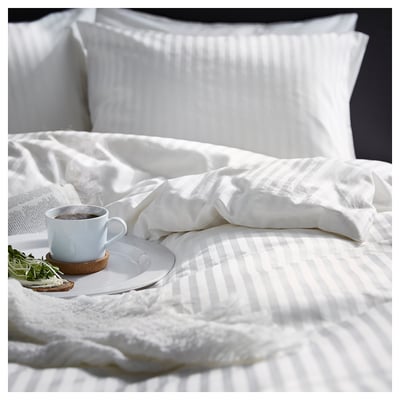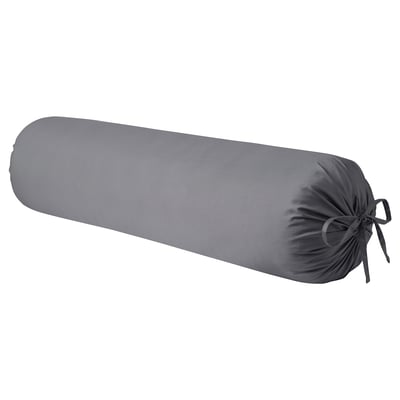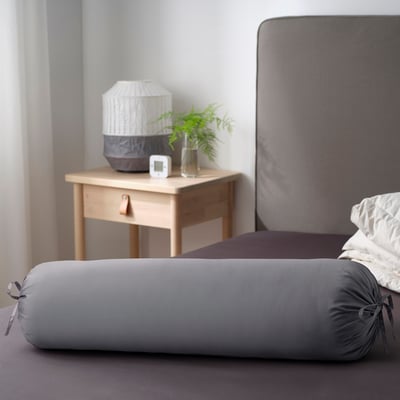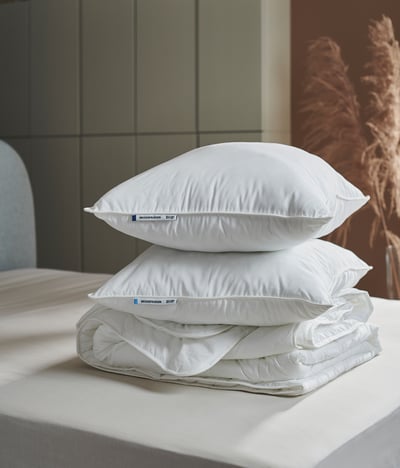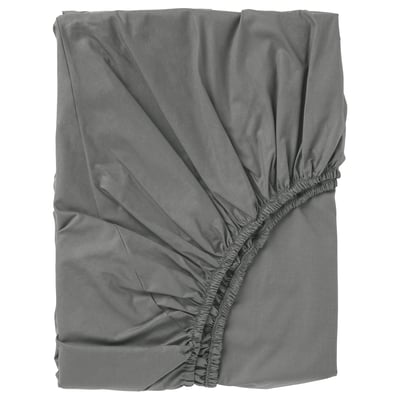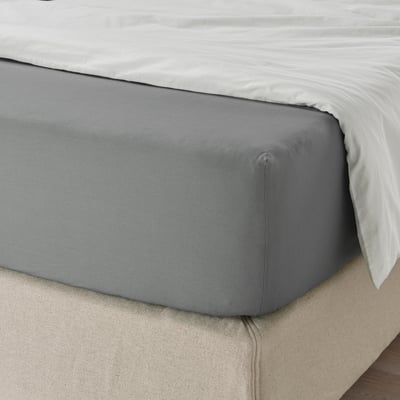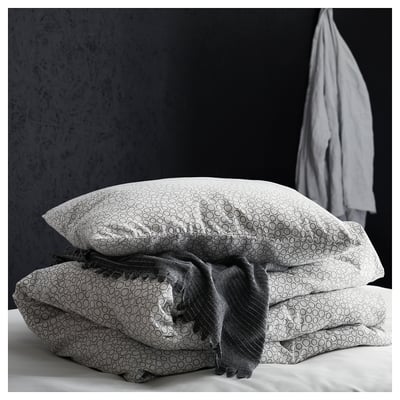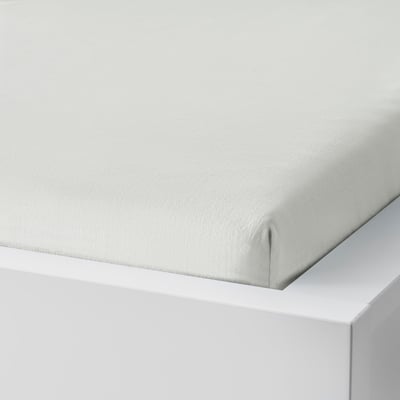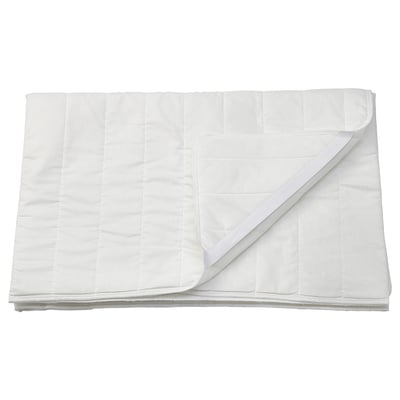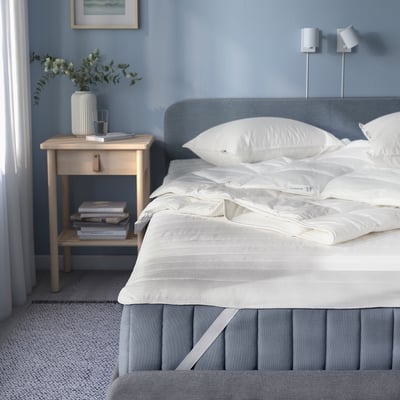Textile guide for bed linen
Different types of fabric
Fibres can be synthetic or natural, with the most common natural fibre being cotton and polyester as the most popular synthetic fibre. Each type of fibre is unique and bares different properties; some are sturdy and thick while others are smooth and flexible. Fibres are often combined together into blends giving a combination of desirable qualities.
In IKEA, we have a wide range of bed linen made with different types of fabric material; this simple guide will give you an idea of the different fuctions and feels of the material to enable you to choose the bed linen –from pillowcases, bed sheets, blankets to duvet cover sets, based on your preference.
Cotton
Cotton is one of the world's most appreciated and used natural fibres. Cotton is also known for its soft, fresh, and crisp feel, especially when you first start sleeping on new sheets! With every wash, cotton gets just a bit softer and softer. Cotton's two biggest strengths are: it transmits heat well, and it absorbs moisture well. It cools you down better than any other natural material.
Today at IKEA we use more and more recycled cotton and strive to make sure that all the new cotton we use has been grown and produced with less and less amounts of pesticides, fertilisers and water.
Read more on our 100% committed to sustainable cotton.
Lyocell
Lyocell is a strong and silky-smooth fibre made of cellulose from wood pulp. Wood is a renewable material and needs less water, pesticides and artificial fertilizers to grow than, for example, cotton.
Lyocell is a naturally cooling material, and the hydrophilic nature of lyocell fiber makes it super absorbent. Lyocell sheets are very effective at wicking away moisture and keeping you comfortable through the night. That’s why we like to use it for bed linens and as a filling in pillows and duvets to give you a good night's sleep.
Linen
Linen is made of plant fibres from the flax plant and is one of the most hard-wearing textiles there is. The cultivation requires significantly less water than many other plants, and since the whole flax plant can be used, very little is wasted.
The flax plant's somewhat irregular surface gives linen its distinct texture and fine lustre. Also linen fibre’s smooth surface gives bed linens a comfortable and cooling feel. This durable and stain-resistant fabric become softer and softer the more you use it.
Linen can also be mixed with cotton to get a slightly softer textile.
Recycled polyester
Polyester synthetic fibre that's durable and light. It is easy to care for since the material is wrinkle-free, stain resistant and quick-drying. Also, the colours stay vibrant, wash after wash.
The downside to virgin polyester is that it is made from oil, coal or natural gas. This means that when we use virgin polyester, we are exhausting the planet’s natural resources. In IKEA, our response to this, is to replace all virgin polyester with recycled in our products. In 2020, we achieved the milestone of replacing 79% of the virgin polyester used in IKEA textile products and will accelerate the transformation towards the aim of only using recycled polyester throughout the product range where polyester is used.
When we create products from recycled polyester, PET bottles and other sources of polyester get a new life in products like textiles, storage boxes, kitchen fronts and even lamps. When using them, you get to enjoy exactly the same quality and function as with virgin polyester products. And naturally, they’re just as clean and safe in every way. And perhaps the very best part – you contribute to using less new raw materials too.

